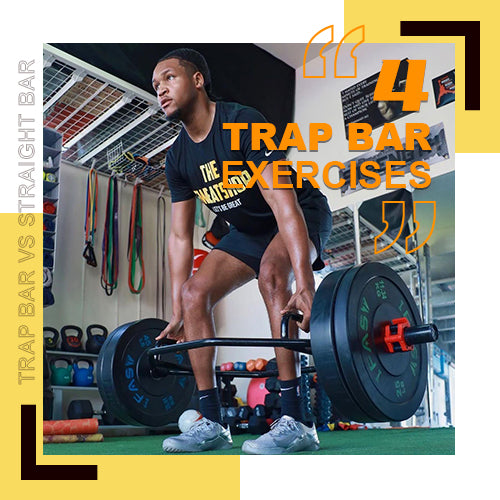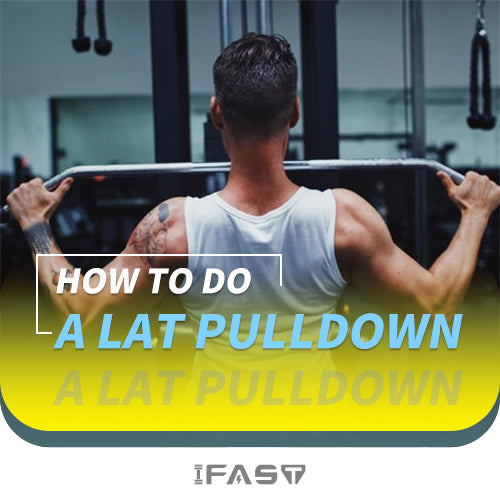The dumbbell shoulder press is a well-known shoulder exercise. The exercise process looks straightforward but contains a lot of fitness knowledge. It requires trainers to master the training skills carefully during the exercise process so that the efficiency of shoulder push is greatly improved.
Introduction of dumbbell shoulder press
Dumbbell shoulder press exercises are divided into standing dumbbells and seated dumbbells. Moreover, healthy friends love established dumbbells because it is easier to control the body's stability. But no matter what exercise is used, the goal is to help trainers create broad, rounded shoulders.
From the perspective of shoulder physiology and anatomy, we refer to the deltoid muscle in the shoulder, including the anterior, middle, and posterior three muscles. This movement mainly targets the middle and front deltoid muscles and can enhance the fundamental strength of the shoulders. When exercising, the choice of weight is free, but it must be based on your carrying capacity. Otherwise, your shoulders will be injured. Many fitness friends are skeptical about improving the effectiveness of the middle beam exercise, which can shape the shoulder muscles and make your shoulder line more beautiful.
Dumbbell shoulder press muscles worked
Strong. When we use dumbbells to push the shoulders, we can feel that the deltoid muscles are taut and the force is relatively large when we lift them. Therefore, this action can exercise the deltoid muscles well and strengthen our shoulder muscles. In addition, the deltoid muscle has front, middle and rear beams. Doing the dumbbell push shoulder exercise is the front and middle beams of the deltoid muscle. Not only that, in the process of doing it, the triceps can also feel obvious. Therefore, if you want to practice shoulder muscle strength, it is most suitable to do dumbbell shoulder presses.
How to do dumbbell shoulder press
1.Observe the upward trajectory of the arm
Athletes often bend their arms forwards or backward while doing this movement, ultimately increasing the stress on the arms. If you do this kind of incorrect posture, the component will be fatigued in advance, affecting the exercise effect and making the arm pain. Therefore, at this point, the arm should be perpendicular to the ground.
2.Skills to control shoulder external rotation
To achieve this goal, first of all, our body should be kept stable, the upper limbs should not be shaken, and then the shoulders should be externally rotated. It is recommended that everyone choose the lucky cat movement. The distance between the arm and the torso is too far, reducing the pressure on the forearm and making the front muscles contract stronger.
3.Control the range of pushing the dumbbell upwards
When the dumbbells move upward, the arms are fully straightened at the highest point, the pressure on the wrists increases, the friction of the shoulder joints increases, and when the dumbbells are lowered, the height of the hands is lower than the ears, the elbow joints are excessively advanced, and the force on the arms increases. , to improve the friction of the shoulder joint and avoid injury during sports
Dumbbell shoulder press variations
Standing dumbbell shoulder press
This training is an exact test of everyone's athletic ability. The dumbbells can be placed at the top or above the chest and shoulders in the starting position as you press the dumbbells until your arms are straight and the dumbbells are over your head. Pause for about a second and slowly lower the dumbbells back to your chest, shoulder height. Lift the dumbbells to inhale, restore the exhale, and vice versa. After this is done, straighten your back and tighten your abdomen, focus on your front deltoid muscles, and use less strength from other parts to exert force, so that you can train more targeted.
Seated dumbbell shoulder press
When we do the seated dumbbell shoulder press, we must first choose a dumbbell that suits our weight, then take one in each hand, and pay attention to the direction of the palm is forward. We need to lift the dumbbell to both sides of the shoulders, continue to lift vertically, and then Fall slowly and complete a complete set of movements.
Dumbbell Arnold shoulder press
During the pressing process, the heart of the fist is rotated from facing the body to the front. The hands and arms are turned from the front of the body to the sides of the body and raised above the head until the arms are perpendicular to the ground when viewed from the front, the elbows are slightly bent and then Lower back to the original position according to the lifting motion trajectory.
Barbell Vs Dumbbell Shoulder Press
Barbell shoulder press
The barbell shoulder press is on the same list as the bench press, squats, and rowing and is the only exercise for those looking to gain their deltoid muscle.
Pros
The multi-joint nature of the barbell shoulder press, unlike other movements, builds muscle and strength. Simple, essential, and relevant to practical use, it's useful. Activating the front and medial parts of the deltoid complex, the barbell shoulder press is also beneficial for building muscle and strength in other areas, such as the traps, triceps, and upper chest.
Cros
Since the overall muscle is the main advantage of the barbell version, it cannot distribute the load to the rear delts, which can cause potential injury if not exercised properly. Short distances and a tendency to use too much weight are two red flags for injury. The conceit often lifts its ugly head, and the shoulder press becomes a shoulder burner rather than a builder. Impacts, chronic soreness, and upper and lower back strains are common when you take them to extremes.
Dumbbell shoulder press
The dumbbell shoulder press is another tedious exercise you'll see at your local gym. Often preferred over the barbell version due to equipment availability (usually with a barbell shoulder press rack), the dumbbell press is an efficient movement for full muscle development.
Pros
Since you're using two dumbbells that move independently, this version of the press forces you to use more of your support muscles. Also, because the elbows point to the sides (unlike the barbell version, which points slightly forward), you get more muscle fibers from the medial and posterior delts. Finally, since you'll be using a more independent range of motion, you won't have to use as much weight, reducing your risk of injury.
Cros
The dumbbell shoulder press is not the right choice if you have balance, range of motion, or ego issues. If you're doing half-reps with a lot of weight, you're asking for trouble. Some people also struggle to get the weight up to the starting position. Finally, maintain an upright upper body position on a bench or seat. I see too many people sinking into the heart, the movement will change from a shoulder press to an incline bench press.
Conclusion
Of course, the choice ultimately comes down to your personal preference, comfort level, and injury propensity. Both have practical, real-world applications, the barbell version will put more load on your anterior deltoid with heavier loads, while the dumbbell version will help refine the entire deltoid area, which requires more control and Skill.
You can easily incorporate these two movements into your current training program, rotating the barbell press for heavier strength days, and dumbbell presses for lighter, higher rep build days. The choice is yours, but both will serve you well.
Read more: Dumbbell Vs Kettlebell
Dumbbell shoulder press FAQs
Q: What is a good weight for shoulder press dumbbells?
A: What is a good dumbbell shoulder press? A male lifter's average dumbbell shoulder press is 71 lbs (1RM). This takes your strength level to intermediate, a very impressive boost. Male beginners should aim to lift 29 pounds (1RM), which is still impressive compared to the general population.
Q: How deep should you go on dumbbell shoulder press?
A: Lower the dumbbells until they're just above your shoulders (the handles should almost line up with your ears) to return to the starting position.
Q: How many reps should I do for shoulder press?
A: For the shoulder press, begin using a weight that you can control for 2–3 sets of 8–12 repetitions. Choose a weight that allows you to maintain good technique throughout all stages and repetitions.
Q: Why is shoulder press so hard?
A: The shoulder muscles are small, the endurance is high, and the sense of force and pump is challenging. For our deltoid, it is divided into the front, middle, and rear of the deltoid. It can be said that, unlike the biceps and triceps of the arms, it can be done through a single action of curling, flexing, and stretching. Often we practice on the shoulders. Although the choice of action is small, it isn't straightforward.


